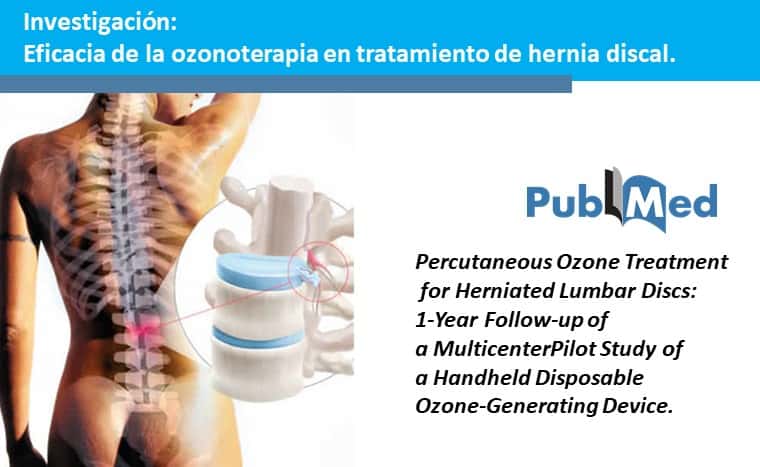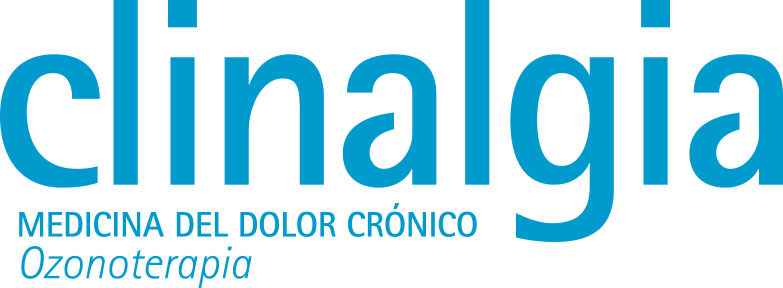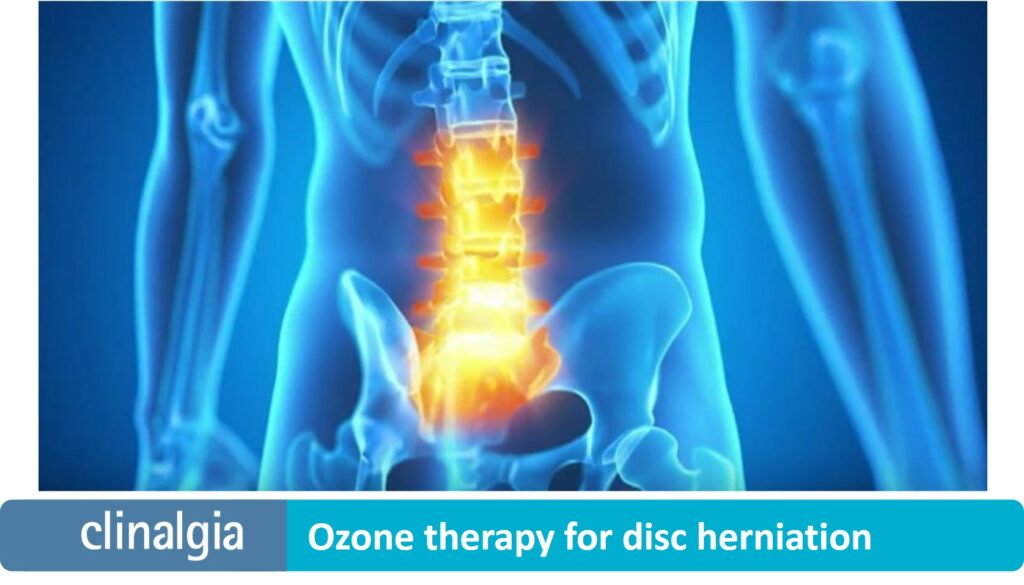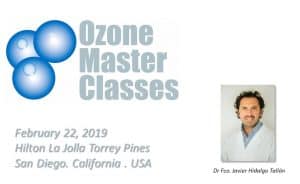
30 May OZONE HERNIATED DISC STUDY
Research study demonstrates the efficacy of ozone therapy in the treatment of herniated discs.
Percutaneous ozone treatment for herniated lumbar discs:
1-year follow-up of a multicenter pilot study of a disposable hand-held device that generates ozone in disc herniation.
Purpose
To evaluate the safety and efficacy of oxygen-ozone treatment delivered via a new hand-held ozone-generating device to improve pain and function in patients with herniated discs.
Materials and Methods.
A total of 39 patients with herniated lumbar discs received oxygen-ozone treatment at 1 of 3 centers.
Treatment consisted of 2% ozone injection (10 ml): 3 ml administered into the nucleus pulposus and 7 ml administered into the adjacent paravertebral tissues.
The first 8 patients received ozone injections only, while subsequent patients also received periganglionic methylprednisolone (40 mg) and 0.5% bupivacaine injections (1 ml).
Patients were assessed at baseline and at 1 month, 6 months, and 12 months after treatment using the Oswestry Disability Index (ODI) and the Visual Analog Scale (VAS) for leg pain and back pain.
Analgesic medication use was also assessed at each time point.
Results
Overall, 91% (32/35) of patients per protocol (those who completed follow-up and had no significant deviations from protocol) showed detectable improvement in ODI at 1-month follow-up; this increased to 93% (26/28) of patients at 12-month follow-up.
1 month after treatment, 60% (21/35) of patients showed significant improvement in ODI scores ( p = .01); 54% (19/35) showed significant improvement in VAS scores for leg pain ( p = .05); and 49% (17/35) showed significant improvement in VAS scores for back pain ( p = .12).
At 6 months after treatment, 67% (22/33) of patients showed significant improvement in ODI scores ( P = .02); 64% (21/33) showed significant improvement in VAS scores for leg pain ( P = .01); and 52% (17/33) showed significant improvement in VAS scores for back pain ( P = .12).
At 12 months after treatment, 68% (19/28) of patients showed significant improvement in ODI scores ( P < .01); 64% (18/28) showed significant improvement in VAS scores for leg pain ( P < .01); and 61% (17/28) showed significant improvement in VAS scores for back pain ( P = .09).
Leg pain generally decreased more rapidly than back pain.
Analgesic medication use also decreased significantly at all follow-up time points compared to baseline ( p <0.01). There were no adverse events or device-related problems.
Conclusions
At 1, 6, and 12 months after treatment, patients experienced significant improvements in pain and function, as well as a significant decrease in analgesic use.
Taken together with the absence of adverse events at 1-year follow-up, these data suggest that oxygen-ozone treatment is a safe and effective therapy for discs with contained herniation.
Copyright © 2018 SIR. Published by Elsevier Inc. All rights reserved.
Author information.
Department of Anesthesia, University Health Network, University of Toronto, 399 Bathurst Street, Toronto, Ontario, Canada M5T 2S8.
Department of Radiology, Vancouver General Hospital, University of British Columbia, Vancouver, Canada.
Department of Radiology, London Health Sciences Centre, University of Western Ontario, London, Canada.
Joint Department of Medical Imaging, University Health Network, University of Toronto, 399 Bathurst Street, Toronto, Ontario, Canada M5T 2S8.
Joint Department of Medical Imaging, University Health Network, University of Toronto, 399 Bathurst Street, Toronto, Ontario, Canada M5T 2S8. E-mail address: kieran.murphy@uhn.ca.
Original article at: https://bit.ly/2IkRwkR






